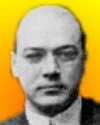
On 4 Sep 1922, Edward Spitzka died at age 46. He was an American anatomist and brain morphologist who assisted at the autopsy (29 Oct 1901) of the brain of Leon Franz Czolgosz, the assassin of U.S. president William McKinley. At the time, he was only in the fourth year of his medical training. Although he detected a few very minor variations in gyri and sulci patterns in the brain of Czolgosz, he reported in the New York Medical Journal(1902) that “nothing has been found in the brain of this assassin that would condone his crime.”
Four years later, his studies were the subject of an article in the New York Times, Looking for “The Face Within the Face” in Man, in which he discussed the latest phases of cerebral science, and that there was “No Such Thing as a ‘Criminal Brain Type.’” He was interviewed in his workshop, where about thirty brains were held, each in their own jar, swimming in a solution of formalin and salt. Though there were brains of some noted criminals among them, he said there was no way to distinguish those from the brain of a man of genius.
As you read this article, note the caution with which it begins, a paraphrase Mark Antony's famous invocation: “If you have brains, prepare to shed them now.”

On 4 Sep 1848, Lewis Howard Latimer was born, a distinguished Black American inventor who contributed to electrical technology. After serving in the Union navy, he returned to Boston, joined a patent law firm, taught himself drafting, and had such a talent that he evenutally became chief draftsman for that company. He assisted Alexander Graham Bell prepare patent drawings for his telephone invention patent (issued 7 Mar 1876). After a time working for Hiram Maxim, where he was introduced to the emerging technology of the electric light, Latimer shared a patent for the “incandescence of a continuous strip of carbon secured to metallic wires,” and held various other patents of his own. Today's book pick is: The Inventive Spirit of African Americans: Patented Ingenuity, by Patricia Carter Sluby, a former United States primary patent examiner, who pays homage to the inventive spirit of African Americans. Beginning with the contributions of enslaved Africans brought to American shores, Sluby introduces inventors and patent holders from all fields up to and including the leading edge of today's technology. Along with such recognizable figures as George Washington Carver and Madam C. J. Walker, readers will discover little-known or forgotten pioneers of devices such as a tobacco substitute, a home security system, and a portable heart monitor. Particular attention is given to the innovations of women inventors and scientists. She presents her painstaking research with a lucid writing style and explores the history of African American inventors and patent-holders as problem-solvers who turned obstacles into opportunities. After reading this book, you may be stimulated to research some of the inventors further.
It is available from Amazon, typically about New from $32.66. Used from $8.30. (As of earlier time of writing - subject to change.)
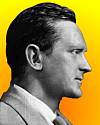 | Infectious disease is one of the few genuine adventures left in the world. The dragons are all dead and the lance grows rusty in the chimney corner. ... About the only sporting proposition that remains unimpaired by the relentless domestication of a once free-living human species is the war against those ferocious little fellow creatures, which lurk in dark corners and stalk us in the bodies of rats, mice and all kinds of domestic animals; which fly and crawl with the insects, and waylay us in our food and drink and even in our love |
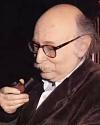 | It is sometimes important for science to know how to forget the things she is surest of. |
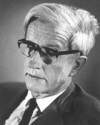 | Any living cell carries with it the experience of a billion years of experimentation by its ancestors. (1949) |
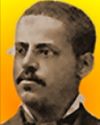 | We create our future, by well improving present opportunities: however few and small they be. |
| Before you look at today's web page, see if you can answer some of these questions about the events that happened on this day. Some of the names are very familiar. Others will likely stump you. Tickle your curiosity with these questions, then check your answers on today's web page. | |
| Births | |
 | Max Delbrück, born 4 Sep 1906, was a German-born U.S. biologist who was a pioneer in the study of molecular genetics. He was a co-recipient of the 1969 Nobel Prize for Physiology or Medicine. His work was on the replication mechanism and the genetic structure of bacteriophages, which serve as models for the more complex, less approachable cells of animals and humans. What is a bacteriophage? |
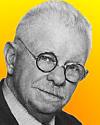 | On 4 Sep 1866, Simon Lake was born, who from 1886 built the Argonaut. With refitting, an over a period of several years, it travelled 2,000 miles. What was the Argonaut? |
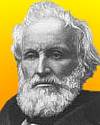 | On 4 Sep 1783, Frederic Tudor was born, who created an export trade in an unusual product. His first delivery left on 10 Feb 1806 from Boston to Martinique. He became known as the “King” of this trade, and after periods of debts later produced comfortable profits. What was his unusual export product? |
| Deaths | |
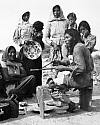 | William John McGee (1853-1912) was an American geologist and archaeologist who was noted for his pioneer studies of Pleistocene geology of the upper Mississippi River valley and the stratigraphy of the Atlantic Coastal Plain. What was the range in years for the Pleistocene? |
| Events | |
 | On 4 Sep 1951, the U.S. President inaugurated transcontinental television service in the U.S. when AT&T carried his address to the United Nations in San Francisco to viewers as far away as New England. Who was this president? |
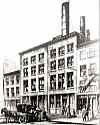 | On 4 Sep of a certain year, the first electric central station to supply light and power was the Edison Electric Illuminating Company of New York City. It had one generator which produced power for 800 electric light bulbs. What was the decade of this event? |
Fast answers for the previous newsletter for September 3: positron • hen's eggs • maize • Continuous production from pulp at one end of the machine to large finished paper rolls at the other. • Chile • Mersenne prime.
 If you enjoy this newsletter, the website, or wish to offer encouragement or ideas, please send feedback by using your mail reader Reply button.
If you enjoy this newsletter, the website, or wish to offer encouragement or ideas, please send feedback by using your mail reader Reply button. Your click on a Facebook, StumbleUpon, or other social button on the site webpages is also a welcome sign of appreciation. Thank you for using them.
© This newsletter is copyright 2020 by todayinsci.com. Please respect the Webmaster's wishes and do not put copies online of the Newsletter — or any Today in Science History webpage. (If you already have done so, please remove them. Thank you.) Offline use in education is encouraged such as a printout on a bulletin board, or projected for classroom viewing. Online, descriptive links to our pages are welcomed, as these will provide a reader with the most recent revisions, additions and/or corrections of a webpage. For any other copyright questions, please contact the Webmaster by using your mail reader Reply button.
--
If you do not want to receive any more newsletters, Unsubscribe
To update your preferences and to unsubscribe visit this link
Executive Real Estate Business Class
-
"It was like a man with wings. It wasn't like anything you'd see on TV or in a monster movie." ...
About the publisher
Search This Blog
Blog Archive
-
▼
2021
(585)
-
▼
September
(95)
- 800-Year-Old Tomb Discovered in Peru
- 600-Year-Old Muisca Jars Recovered in Colombia
- Human Footprints in North America Dated to 23,000 ...
- September Quiz
- Gas pipe workers find 800-year-old burial bundles
- Gas pipe workers find 800-year-old burial bundles
- Dark Destiny!
- Long-Distance Trade Detected in Genomes of Siberia...
- Composition of Stone Tools From Roman Morocco Anal...
- New Thoughts on Maya Pyramid in El Salvador
- This Civil War–Era Eagle Sculpture Was Made Out of...
- Roman gold coins found off coast of Spain
- Roman gold coins found off coast of Spain
- Review of The Bombay Prince by Sujata Massey, a my...
- DNA Analysis Identifies Japanese Ancestors
- Ritual Objects Discovered in Northern Egypt
- 'Band of Brothers' Stars Reflect on the Epic Minis...
- ‘Cake mummy’ survived WWII bombing of Lübeck
- ‘Cake mummy’ survived WWII bombing of Lübeck
- Am I my heroines?
- Medieval Mass Graves Excavated in Lebanon
- Three Phases of Wooden Wagon Way Uncovered in Scot...
- Rare Shell Artifacts Discovered in South Australia
- Burned Layer at Jamestown Linked to Bacon’s Rebellion
- Burned Layer at Jamestown Linked to Bacon’s Rebellion
- Painted 14th c. burial vaults found in Bruges
- Painted 14th c. burial vaults found in Bruges
- Possible Grave of Medieval Christian Hermit Excava...
- My notebook and I got drenched and my story was bo...
- Woman buried with heavy bronze jewelry found in in...
- Woman buried with heavy bronze jewelry found in in...
- Birthdays in History
- Teaching "All Men are Created Equal" (Part II)
- Psychologically Speaking, Who Were the Heads of th...
- Christmas Roses
- For Constitution Day, Let's Toast the Losers of th...
- We are All Becoming Cassandras: Leaders Must Heed ...
- Inequality Tends to Reach Political Tipping Points...
- The Roundup Top Ten for September 17, 2021
- Memo From Irish History: Welcome to Your Future, A...
- Rediscovered early drawing by Van Gogh on display
- Rediscovered early drawing by Van Gogh on display
- Hispano-Visigothic grave found at Spain cave hermi...
- Hispano-Visigothic grave found at Spain cave hermi...
- Searching for the Fisher Kings
- Bone Tools in Morocco May Be Earliest Evidence of ...
- Did Eurasia’s Early Bronze Age Pastoralists Drink ...
- The Trousseau
- Wood lion head recovered from Finnish shipwreck
- Wood lion head recovered from Finnish shipwreck
- The Floating Book by Michelle Lovric, a sensual no...
- Sculpture of Lord Ganesha Uncovered in Southeaster...
- Saudi Arabia’s Rock-Cut Camels Redated
- Possible Parietal Art Discovered on the Tibetan Pl...
- Renaissance shield looted by Nazis returned to Cze...
- Renaissance shield looted by Nazis returned to Cze...
- Anglo-Saxon Silver Brooch Recovered in England
- Roman Sewer System Discovered in Turkey
- Face of “Dutch Neanderthal” Reconstructed
- Gupta-Period Temple Found in Northern India
- The Polynesian 'Prince' Who Took 18th-Century Engl...
- When George Washington Took a Road Trip to Unify t...
- On 9/11, a Flotilla of Ferries, Yachts and Tugboat...
- Southern Tomb in Djoser funerary complex opened
- Southern Tomb in Djoser funerary complex opened
- Ask A Wench — What We've Been Watching
- Possible Prehistoric Campsite Uncovered in Norther...
- Statue of Roman Emperor Hadrian Unearthed in Turkey
- When George Washington Took a Road Trip to Unify t...
- Byzantine-era axe, machete found in ancient city
- Byzantine-era axe, machete found in ancient city
- Early Hollywood is a family affair in The Limits o...
- Maya rulers installed in Met’s Great Hall
- An Interview with Susanna Kearsley
- ENTER THE HEART OF DARKNESS | Legend of the Supers...
- ENTER THE HEART OF DARKNESS | Legend of the Supers...
- The Disturbing Case of Xavier Dupont de Ligonnès
- Newsletter for Sunday 12 September.
- Newsletter for Saturday 11 September.
- ‘Rise and Fall: The World Trade Center’ Premieres ...
- Newsletter for Friday 10 September.
- Newsletter for Thursday 9 September.
- Newsletter for Wednesday 8 September.
- Holiday savings - extended!
- Support Black-Owned Businesses: 181 Places to Star...
- Newsletter for Tuesday 7 September.
- Holiday savings for the whole family!
- Newsletter for Monday 6 September.
- Three All-New 9/11 Documentaries
- Newsletter for Sunday 5 September.
- Newsletter for Saturday 4 September.
- Labor Day Sale at the History Store
- Newsletter for Friday 3 September.
- Newsletter for Thursday 2 September.
- Newsletter for Wednesday 1 September.
-
▼
September
(95)
-
Blogroll
-
About
HistoryFact










0 comments:
Post a Comment